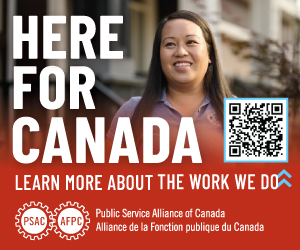Making Farming Work
Canadians want organic, local food more than ever before–so why can’t farmers and farmworkers make a living growing it for them?
All across the country, the organic food sector is growing by leaps and bounds. Farmers’ markets are enjoying the biggest resurgence they’ve ever seen, and Canadians are more engaged in our food system and more concerned about our food security (or lack thereof) than ever before. And yet everywhere I go and talk to farmers, organic or otherwise, they struggle to make a living.
There are two sets of interlinked issues at play: those of farmers themselves, and those of farm workers. As small business owners, farmers have been thrust into a hyper-competitive global commodity market by both national and international trade policies. The concentration of power in Canada’s food sector toward large processors on one end and farm input suppliers on the other has farmily farms being squeezed on all sides. As a result, the number of family farms in Canada is shrinking as more and more farmers give up on the losing game they find themselves in.
Canadian farmers have produced more and more over the last three decades, but have realized less and less income while input suppliers and food processors have logged huge profits. The National Farmers’ Union reported in 2008 that the average net income for most Canadian farmers was negative $10 000 per year. Medium-sized farms, which rely on help from outside the farm family and have traditionally been important employers in rural places, are the ones hardest hit.
Many farmers cite labour as one of their biggest challenges, both finding people to work for them and making enough to pay their staff, let alone themselves. A 2010 report by the federal government’s Agricultural Human Resources Commission (CAHRC) projected that Canada’s farmers will need 50 900 more year-round workers and 38 800 more seasonal workers by 2013 just to keep going. Even in rural communities decimated by the farm income crisis, the end of resource industries like logging and fishing, and the flow of talent, money, and jobs out of rural Canada and into the cities, high unemployment doesn’t seem to translate into an available pool of labour to keep our country fed and our farmers in business.
The CAHRC report cites low wages and competition from other sectors, as well as the negative perception of farming as a career choice, among the sources of the farm labour shortage, but that all seems to be three ways of saying the same thing: farmers and farm workers work their butts off and don’t make a fair living doing it. The result is that farmily farms are drowning in debt, sliding a little further under every year, and can’t pay themselves or their staff a living wage to keep our country fed.
Another tragic result of this crisis is that it makes using temporary migrant labour to deal with their labour/cashflow problem look more and more attractive to farmers, spurred on by the federal governments’ expansion of temporary foreign worker programs. The United Food and Commercial Workers of Canada produces a yearly report on the status of migrant farmworkers in Canada, and in the 2010-2011 report found that “many are forced to do life-threatening work without proper protective gear or training. They are crammed by the dozens into makeshift shanties and unsafe transport vans. They are told not to report their injuries. If they do raise concerns, migrant workers are typically shipped out that day and banished from ever working in Canada again.” An April supreme court decision doesn’t help; it upheld an Ontario law which explicitly prohibits farm workers from forming unions, based on the assertion that farming is too vulnerable to collective actions to allow unionization because the growing season is too short to risk work stoppages.
Sadly, organic farms are not immune; in September of 2010, Jamaican farmworkers Ralston White and Paul Roach were killed on the job at an organic apple orchard in Southern Ontario in an incident that is still being investigated. Studies regarding labour practises on organic farms in the USA have indicated that organic farms are no better than conventional farms with respect to workers’ rights, and nothing suggests Canada’s situation is different.
Fair Farming for Canada
In response to the crisis in both farmer incomes and workers’ wages and conditions, the National Farmers’ Union and PEI’s Cooper Institute are developing a Domestic Fair Trade Project, based on international Fair Trade standards. The project was begun in 2008, and is based on learning from how farmers in the global south have responded to the assault on their rights and livlihoods by many of the same agribusiness corporations and pro-corporate global food policies that are decimating the family farm here in Canada. The rationale for the project is based in a Food Sovereignty framework, the idea that communities should control how, where, and what their food system produces and should be the primary beneficiaries of its benefits, both in terms of where the food goes and in terms of who makes money off that food.
At the same time, the problems of distributing food around the world in the context of a global race to the bottom for the cheapest prices and lowest labour and environmental standards are becoming more and more obvious. Industrial agriculture has succeeded in hiding its true costs for the last five decades or so, but the curtain has been drawn back by global price shocks, food shortages, and its disastrous contribution to climate change. As Canadians become aware of just how few days we are from running out of food in most of our communities, relocalizing our food system starts to look like the only feasible response. It helps that evidence is emerging that small, diverse, organic farms are more efficient and more profitable than their conventional counterparts. Studies at the University of California at Berekley find that, even when profits are adjusted to take out the difference made by premiums paid for organic crops, organic farms turn out more profitable per acre for many reasons, such as lower input costs and less depletion of the soil.
Home Grown Strategies
Back on the ground, farmers and communities are working together to create innovative new models for feeding ourselves in a socially, environmentally,and economically sustainable way. My search for working models of community-based farm businesses took me to what seems like it should be the last place one would look; Vancouver’s much-maligned Downtown East Side.
Behind a high fence off of busy six-lane East Hastings Street, row upon row of raised beds are bursting with organic food and bustling with activity. This is SOLEfood Farm (SOLE stands for Saving Our Living Environment), a social enterprise project of local nonprofit United We Can. Farm manager Seann Dory explains that the supported employment model of the farm allows people to pull themselves out of cycles of poverty and addiction in a way that doesn’t provide just any old job, but a sense of dignity and empowerment. He notes that while lots of money flows into the neighbourhood to provide job training and placement, it’s often true that they’re training people for jobs that don’t exist or aren’t available to them. He also points out that when folks from marginalized communities are placed in jobs in the regular workforce where they are stigmatized for where they come from, “they’re always the first to get cut.” “We created this business in order to create the jobs for people in the neighbourhood,” he says. As well as on-the-job training that pays a living wage and access to the food they grow, staff at SOLEfood are accountable to each other in a peer-supported employment model. “We meet people where they’re at,” says Dory, instead of being a top-down, do-what-the-boss-says-and-be-grateful-for-it model. “We’re meeting a social need through agriculture.”
The project is innovative in many ways, leasing an urban parking lot on a special arrangement that allows the landowner to pay agricultural tax rates on this half-acre and turning a hard-surfaced urban wasteland into an incredibly productive farm: SOLEfood grew 10 000 pounds of food in four and a half months in its first year, 2010, and will be independent of all its startup grants in 3 years, a huge feat for any small business. The food stays local, going to restaurants and food programs in the neighbourhood, as well as to the local farmers’ market for purchase by the general public, funnelling money into the neighbourhood’s economy in a way that decreases dependence on charity. This year the farm is including a Community Supported Agriculture program where folks can put part of their share price toward subsidizing food for low-income families at reduced rates. It’s a model that’s showing what food sovereignty really looks like on the ground and giving people not just a paycheque, but dignity and a sense that they’re improving their community. “When you put the means of production in the hands of a food-insecure community,” says Dory, “things change. Especially for the people who work here.”
A Whole Lot of Problems, One Tasty Solution
It seems like a no brainer, when faced with the multiple challenges of the farm income crisis, an insecure global food system, rising unemployment, economic instability, and accelerating climate change, that we can take all these many problems and put them all together into one big solution: give folks a chance to get to work feeding their communities in jobs that provide them with dignity, control over their work, and a decent wage while improving their local environment and leaving their community more resilient, healthier, and more food secure. We need a new paradigm for the economics of food in this country, one that is based on food sovereignty, not a global race to the bottom that impoverishes farmers, farm workers, and the ecological systems that we rely on for our survival. Good jobs, at a good wage, growing good food that leaves our kids a Canada that’s healthier than we found it. Tastes pretty good, eh?
Find out more about SOLEfood farm at their blog.









